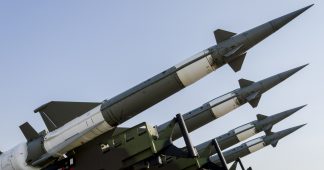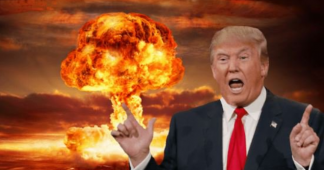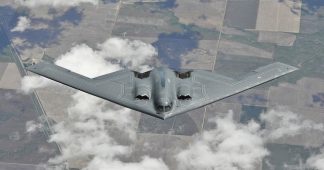07.02.2018
Washington’s Nuclear Posture Review (NPR) 2018 is a double-edged doctrine, as it seeks to prevent North Korea from assertive actions, but could at the same time prompt other state actors to follow in the US’ footsteps and kick-start modernizing their nuclear arsenals, Japanese scholars told Sputnik.
The new US nuclear doctrine makes it clear that Washington will no longer restrain its nuclear capability, Hirofumi Tosaki, а fellow of the Center for the Promotion of Disarmament and Non-Proliferation of the Japan Institute of International Affairs (JIIA), told Sputnik Japan.
“Under President [Barak] Obama’s administration, the essence of nuclear doctrine was expressed very clearly: to reduce the role and diminish the number of nuclear weapons,” the Japanese scholar said. “The new US nuclear doctrine states: Despite all the efforts of the United States, that has taken effort to reduce the number and salience of nuclear arms over the past 10 years, other countries with nuclear capabilities have built their security policies by increasing their atomic stockpiles.”
Tosaki noted that, at the same time, the Obama doctrine did not mention that the US had abandoned the idea of a preemptive nuclear strike. For its part, the new document says that Washington does not reject such an option either, the Japanese researcher remarked. That means that though the wording has changed slightly, the political spirit of the document remained intact, he suggested.
Masashi Nishihara, director of the Research Institute for Peace and Security (RIPS), told Sputnik that Washington’s Nuclear Posture Review 2018 sends a strong signal to North Korea. He believes that the US’ new ‘low-yield’ tactical atomic weapons could become a response to Pyongyang’s nuclear program.
“The US possesses high-yield nuclear bombs, but North Korea believes that ‘America is unlikely to use such powerful weapons’ and turn a deaf ear to the US’ warnings,” the Japanese academic said. “The US is trying to change this situation. After all, there is a danger that North Korea, that has both nuclear and conventional weapons, can strike against the United States and neighboring countries.”
Nishihara suggested that under these circumstances, American ‘low-yield’ bombs would serve as a deterrence factor forcing the Democratic People’s Republic of Korea (DPRK) to exercise restraint.
However, on the other hand, it is equally possible that other states would follow into the US footsteps and consider using their nuclear warheads, the researcher assumed, warning that this could lead to nothing short of a new arms race.
On February 2, Washington released its Nuclear Posture Review (NPR) 2018: “While the United States has continued to reduce the number and salience of nuclear weapons, others, including Russia and China, have moved in the opposite direction,” the document’s summary said.
The doctrine accused North Korea of “[the] illicit pursuit of nuclear weapons and missile capabilities in direct violation of United Nations (UN) Security Council resolutions” and claimed that Iran “retains the technological capability and much of the capacity necessary to develop a nuclear weapon within one year of a decision to do so.”
Citing the alleged security threats the new American doctrine envisages further modernization of US nuclear weaponry prompting justified fears among international observers and politicians.
“The US government’s new nuclear posture shows that the spiral of a new nuclear arms race is already under way,” German Foreign Minister Sigmar Gabriel stated commenting on the NPR’s release.
For its part, the Russian Foreign Ministry highlighted that “the confrontational and anti-Russian nature of this document [Nuclear Posture Review 2018] strikes the eye,” and denounced Washington’s accusations of “increasingly aggressive behavior, including in outer space and cyber space” mentioned in the doctrine as well as the claim that the country breached arms control agreements.
Moscow pointed out that the US allegations appear to be nothing but an attempt to justify its efforts to continue full-scale modernization of America’s nuclear arsenal.
Published at sputniknews.com










